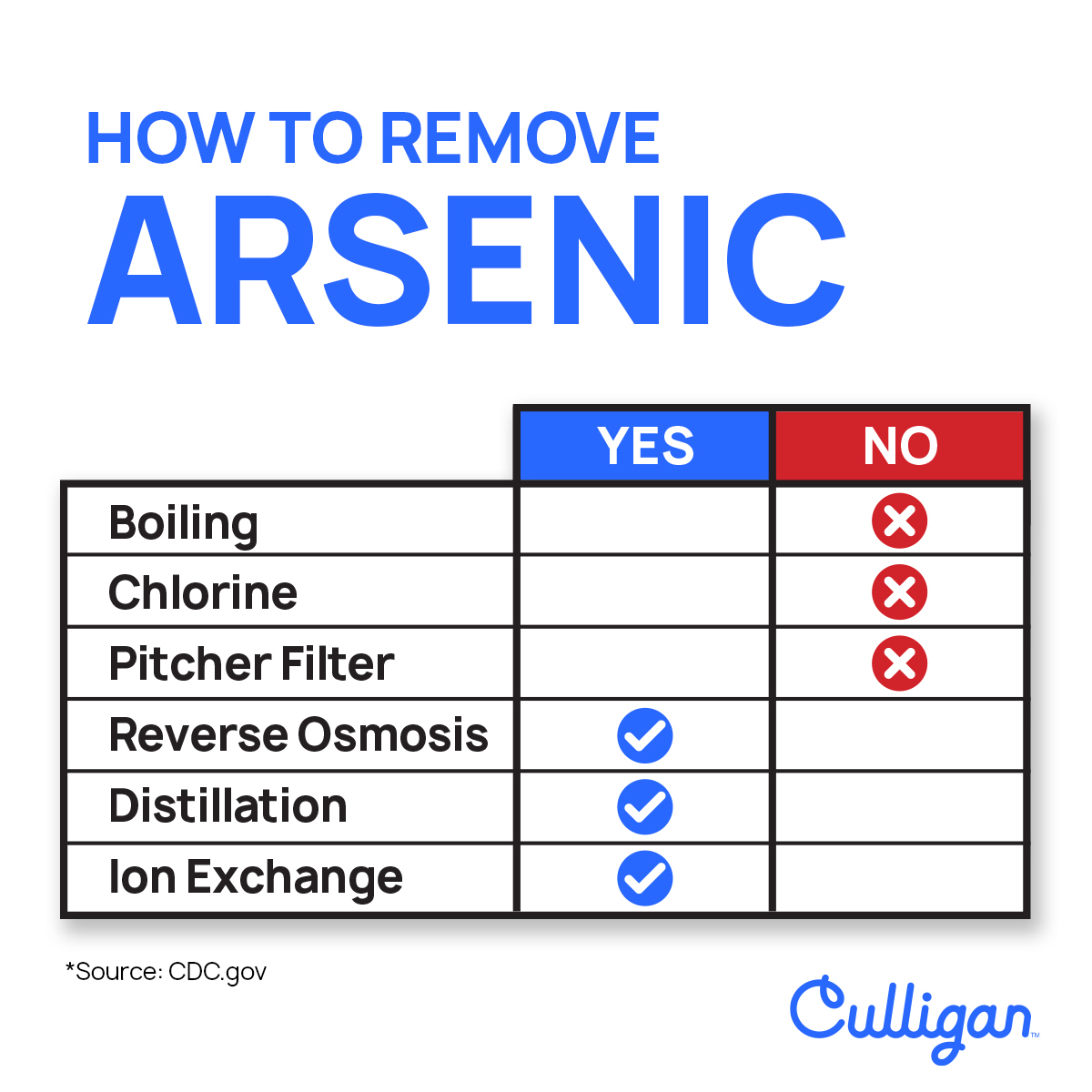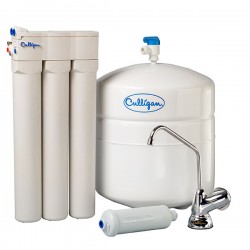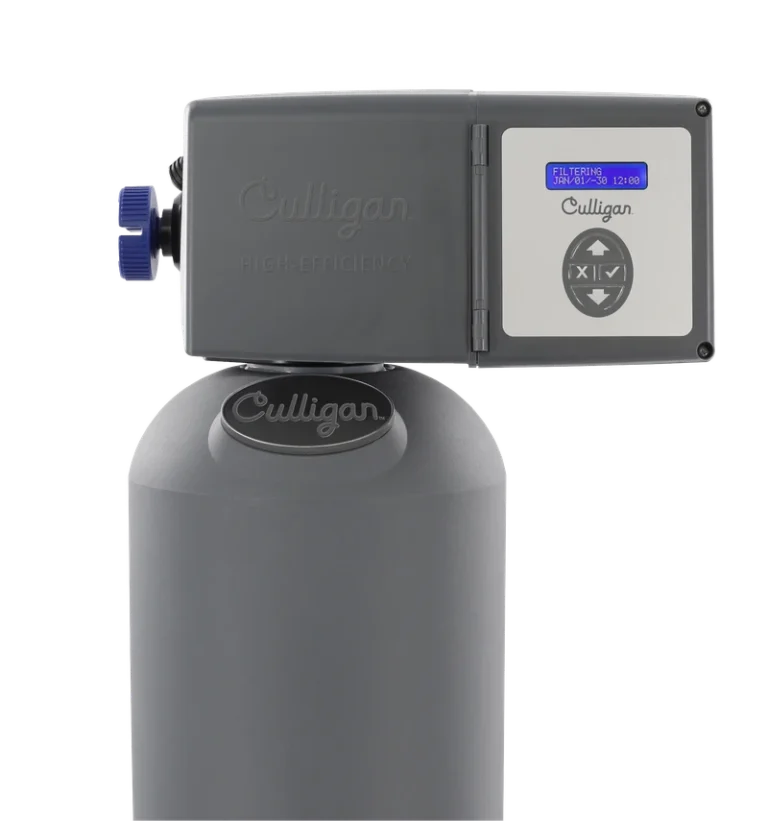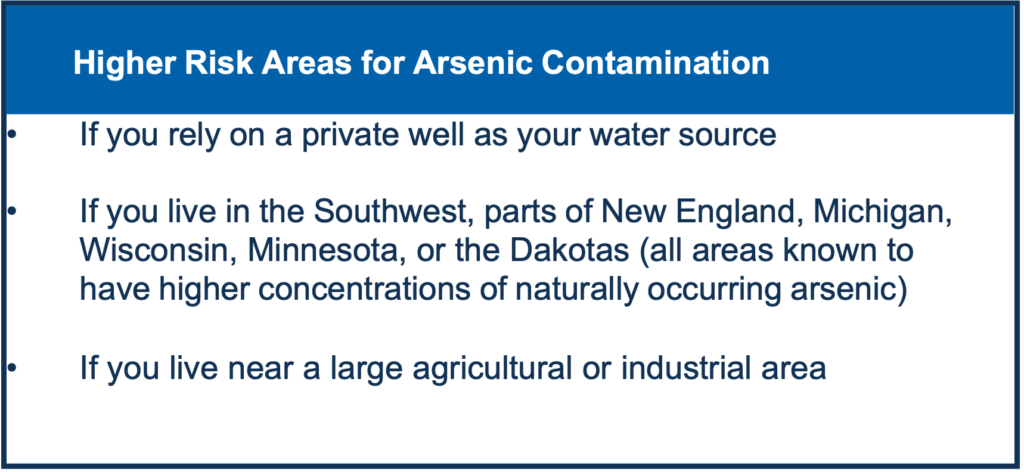Arsenic In Your Water
Frequently used for strengthening lead and copper, arsenic is often used as a component in car batteries and electronics. Arsenic can also be found in treated wood products, herbicides, and insecticides. While arsenic can accumulate in water through erosion, it is more commonly the result of industrial or agricultural runoff.
Health Risks of Arsenic in Drinking Water
Even low levels of arsenic can pose significant health risks. Long-term exposure to arsenic through drinking water has been linked to various health problems, including skin lesions, developmental issues, and cancer, specifically noted for cancers of the bladder, lungs, and skin. The U.S. Environmental Protection Agency (EPA) has set the maximum contaminant level (MCL) for arsenic in drinking water at 10 parts per billion (ppb), but even levels below this threshold may still pose risks, particularly to vulnerable populations such as children and pregnant women.
The contamination levels of arsenic in Tampa’s drinking water ranged from 0.11 parts per billion (ppb) to 0.43 ppb. It is noted that these levels were comparatively low when measured against EPA water quality standards, but they exceed the Environmental Working Group’s (EWG) health guideline by 198 times.
Effects Of Arsenic In Water
One of the more dangerous water contaminants, arsenic can be toxic even in small levels over the long term. According to the EPA, prolonged arsenic exposure has been known to cause or increase certain types of cancer, nervous system damage, skin conditions, and other health concerns.

Why Choose Tampa Culligan for Arsenic Removal?
With decades of experience treating local water issues, Tampa Culligan offers proven solutions backed by advanced filtration technology specifically designed to target arsenic and other harmful contaminants. Our custom whole-home water filtration systems are tailored to Tampa’s water conditions, helping ensure every drop in your home meets higher safety standards. From free water testing to professional installation and ongoing support, Culligan delivers peace of mind—starting with cleaner, safer water.
Solutions
Products to Remove Arsenic

AC-30® Drinking Water System – 4 Stage Filtration
- Reduces Chromium-6.
- Saves money compared to using single-serve bottles from the store.
- Go green by eliminating wasteful plastic bottles.
- Improve the taste of coffee, tea, powdered drinks, soups, recipes and baby formula.
- Free up valuable refrigerator space by eliminating pitchers and bottled water
- Meets strict standards of NSF International and WQA.
- Third-party certified to perform as promised and are backed by one of the most comprehensive warranties in the industry.
- The Culligan® AC-30 Good Water Machine® is maintenance-free. Your local Culligan Man handles everything, and it comes with an elegant designer faucet in a variety of styles to match any kitchen.

Aquasential™ Smart High Efficiency Whole House Water Filters
Reduce sediments in your water and contaminants that cause your water to appear, taste, and smell unpleasant. Your system can also lessen the taste and odor of chlorine, and prevent pipe damage and staining from low pH water. Additional customizations include:
- Culligan® Filtr-Cleer® Water Filters – Reduces Sediment Problems
- Culligan® Cullar® Water Filters – Reduces Taste and Odor Problems
- Culligan® Cullneu Water Filters – Reduces Acid Problems
Signs and Symptoms
Historically, the EPA has identified a large amount of unreported, undocumented cases of arsenic in water across the United States. As a result, federal law now requires that utilities report on all contaminants present in drinking water supplies.
The detection of arsenic in drinking water sources presents significant public health concerns. Long-term exposure to low levels of arsenic can lead to various health issues, including skin lesions, developmental effects, cardiovascular disease, neurotoxicity, and an increased risk of several types of cancer. Vulnerable populations, such as children, the elderly, and those with existing health conditions, are particularly at risk and may experience adverse effects even at relatively low exposure levels.

Arsenic Water Treatment
The most effective way to treat arsenic-contaminated water is through a specialty filter customized to a whole home water filter, so that any accompanying contaminants, like fluoride or TDS, can be effectively removed along with the arsenic.
Impact of Urban Development on Water Quality
As Tampa continues to grow and urbanize, the risk of arsenic contamination can increase due to several factors. Construction and land development can disturb soil and sediment that may contain naturally occurring arsenic deposits. Additionally, increased impervious surfaces can lead to more rapid runoff, bringing contaminants from urban areas into stormwater systems and, eventually, water supplies. As cities expand, it becomes crucial to monitor the effects of construction activities and land use changes on water quality to mitigate further contamination.

Facebook